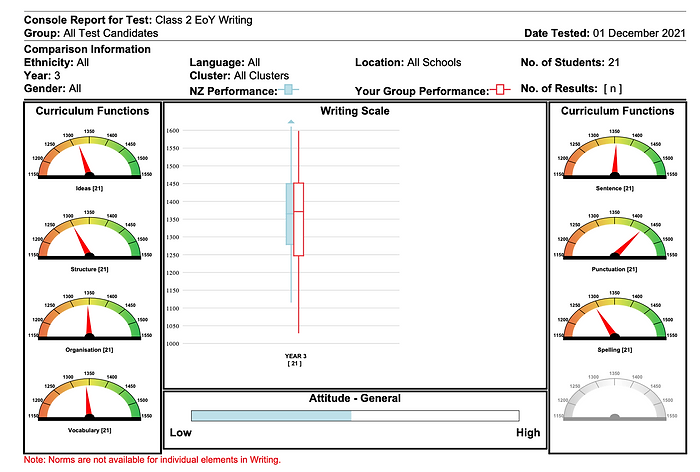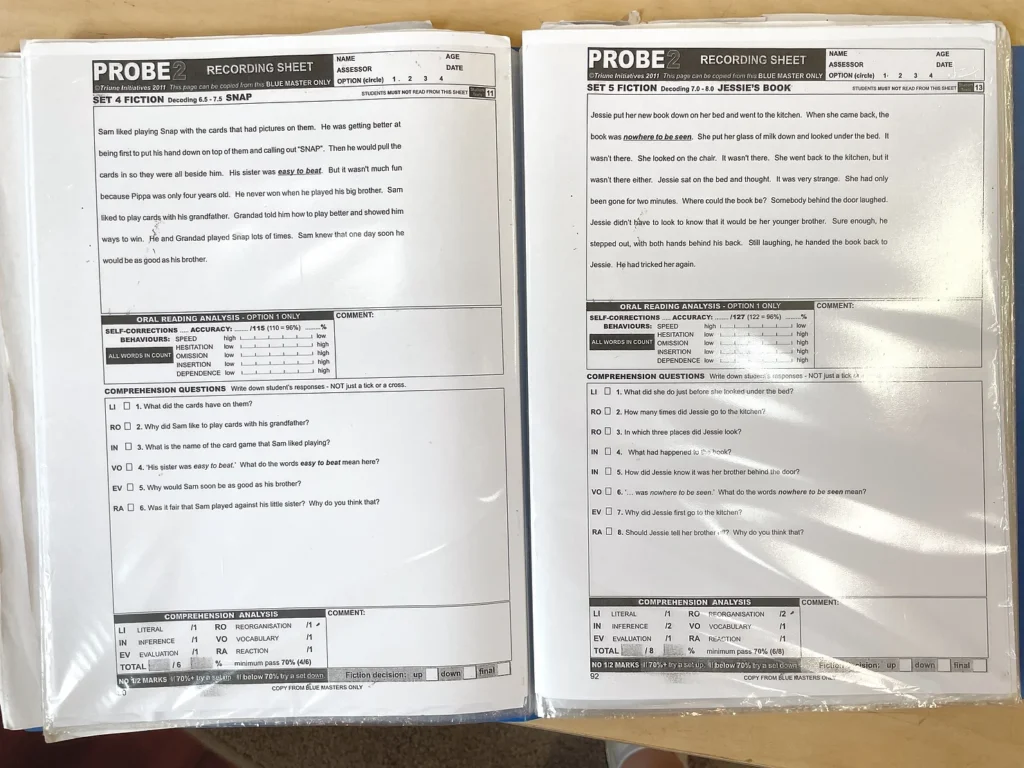Assessment can be a sticky topic in Steiner schools, with the word easily associated with tests, exams and high-pressure achievement expectations. However, in thinking this way, it’s easy to completely discount the importance of assessment for learning. As a tool for teachers to understand where our children are at, what they know and don’t, and where we need to go next with our own teaching. In mainstream schools here in New Zealand, each child is individually assessed for reading, writing and maths multiple times per year – generally there’s a minimum of a beginning of the year assessment, mid-year, and end of year. This assessment data is shared with the students and parents, and in some cases can help boost achievement, but also puts academic pressure on children from a very young age. In the Steiner school, especially in the early classes, we want to use assessment to gain a clear picture of where the children are at and where we need to go next with our teaching, however this information is purely for our own teaching. It can support report writing, but unless something major comes up, it’s unlikely it would be shared with parents directly, and definitely not with the students. We want our students in the younger years to simply enjoy learning for the sake of learning. To be free in their imaginative space. To be unaware of their own capacity compared to others. We recognise students who not only achieve academically, but also artistically, creatively, and socially. And we know that some students take time to ‘wake up’ to academic learning, and assessment does not always reflect our own knowledge of the students. All that being said, I am a firm believer of formal assessment having a central role in our teaching practice. Formative assessment – assessment to develop our own teaching practice – is vital to improving our own teaching expertise, and working for the children before us. An important thing to note with this is that this post refers to formal assessment. Throughout the year I am also collecting plenty of evidence, notes, and samples of work for each child that are used in addition to this more formal assessment programme. So, in the lower classes, what does my formal assessment schedule look like across the year for reading, writing and maths?
Class 1
Students entering class one will hopefully come to you with a report from the kindergarten. This should include the kindergartens leaver assessment, which will give an overview of their applied maths and literacy skills (e.g. Sarah can lay the table for 15 children with two pieces of cutlery per child, by skip counting in 2’s), their fine and gross motor skills, and their assessment of the ‘house, tree, human being’ drawing which is used in Steiner schools across the world to understand the developmental age and stage of the child.
At the beginning of class one you generally assume to be working with students who are not yet reading or writing much (there are of course exceptions to this – in my class one I had a child who when tested was reading at 12 year old level!), and have only got a very basic grip on maths. For the first half of the year you are assessing simply by noticing each child, and jotting down notes about what you see. A notebook set up with the name of each child on a page makes this very easy.
By the middle of class one you hope that the children know each letter and the sound it makes, are beginning to decode and encode CVC words, and are confident counting forwards and backwards and doing simple sums. At this point in the year, it is a good idea to casually do an alphabet assessment with each child – something like this one which is widely used in New Zealand schools.
This gives you a picture of the child’s letter and sound knowledge, and helps you to know whether they are where you thought, or are going to need some extra support in the form of flashcards or bingo to take home.

By the end of class one, students should be proficient at identifying letters and sounds, encoding CVC words, reading sight words, and encoding many of these too. In maths, they should be counting backwards and forwards within 100 comfortably, skip counting in 2’s, 5’s and 10’s, solving simple word problems with or without materials, and becoming proficient at their first 24 basic facts. It’s a good idea at this point to collect a writing sample from each student, and mark it against your national ‘after one year of school’ writing matrix, as well as double check that alphabet test. Depending on the sight word list you’ve been working through, you can find online or create a test identical to the alphabet test but for sight words, and check this with each child too. For maths, you will ideally sit down one on one with each child and do a thorough, interview based assessment. In NZ we use the JAM test (Junior Assessment of Mathematics) – although very time consuming, it is a fantastic tool for understanding exactly where your students are for each maths topic.
So, for each student at the end of class one you should have:
- Two alphabet tests (mid year and end of year)
- A sight word test (end of year)
- A writing sample (end of year)
- A thorough maths assessment such as JAM (end of year)
All of this information should be collated and stored in a file for each child. I have a clear file for every student in the class that I put assessment documents into throughout the year, and this is a great way of being able to flick back later and check in on progress as well as having everything easily accessible.
Class 2
Going into class two, providing you have the same class as last year, you should have a fairly good picture of where each child is at. Early in the year, after three or so weeks back at school, you should do another interview style maths assessment the same as last year. This will give you an idea of where your students have made progress over summer, and where existing gaps are. For the first time at the beginning of class two you should also do a running record for reading with each child. This helps you to know which reading level each child is on so you can group the class for reading. You’ll likely start reading groups from term two, so it’s essential you’ve done a running record on each child before then.
In the middle of class two you should once again assess maths. By now you’ll probably have about half the class ready to move onto the next test level – in NZ this is called GloSS (Global Strategy Stage) – which is essentially a more advanced version of the JAM assessment with a greater focus on applied strategies and less on the basics. At this point in the year it’s a good idea to redo running records, at least on those students who have made big jumps in their reading, to make sure they’re still working in the right group.
At the end of class two you should collect a comprehensive set of assessment data for reading, writing and maths. From the beginning of class three you’ll want to set up proper support for those who may have learning challenges, and your school may also provide you with extension opportunities for those students who would benefit from that. Solid assessment data from the end of class two help with this, and also provides you with a really clear picture of what your teaching should look like next year.

Each child should have a running record, and GloSS (or equivalent), and a writing sample. Ideally, your writing sample will be done and marked to your national curriculum expectations. In NZ, this is called an e-asttle assessment, which is a tool that provides a writing prompt and instructions for administering the assessment. After you have collected the samples, there is a thorough marking rubric to work through for each sample, and then the data is entered into an online tool which provides a huge amount of both individual and class data about where the individual and group sits compared to the national average, and the strengths and gaps for both individuals and the class. This kind of writing assessment is invaluable for us as teachers for objectively understanding where our students are at and where we need to go next with our teaching.
By the end of class two, your students can be working, on average, to the national curriculum standard for their age. This is much earlier than many would expect in a Steiner school, however with thorough assessment and solid academic instruction from class one, this can be achieved without any extra pressure.
Class 3
Class three will be have a very similar assessment schedule to class two. Instead of running records, many of your students will now be reading fluently and therefore ready for the next level of reading assessment, whatever that may be (it should be short pieces of text with a greater comprehension focus).

For maths, the students should now be on GloSS (or equivalent), and writing samples should be collected and marked at the beginning, middle and end of the year.
This is also the year to assess for those who you suspect may have learning challenges such as dyslexia, and put in place the formal support you can for these students.
If your students hadn’t reached national curriculum level for their age by the end of class two, they should have reached it comfortably by the end of class three.
A final word…
So, my version of assessment is a definitely not a system that is widely used amongst Steiner schools, especially in the lower year. However, I cannot imagine teaching without it! How would I know for sure where my students are at? How would I be sure I’m teaching things they don’t already know? There have been multiple times where I’ve done a one on one assessment with a child and been blown away by how high they came out, or how much they knew that I simply don’t see in a class setting. On the other hand, there have been times when I’ve assessed a child who seemed to be doing just fine, and it turned out that they couldn’t even count backwards from 23, or read basic sight words. All this is essential to my teaching and planning, and without it I’d be floundering around in the dark and missing what my students need most. Yes, it is a fair bit of extra work, and takes a lot of time that we as teachers don’t always have. But I cannot speak highly enough of teaching using formative assessment in the lower classes, and would always, always, recommend it to any teacher on their teaching journey in the lower school.
What are your thoughts and experiences with assessment in the lower school? I’d love to hear – leave a comment below.
